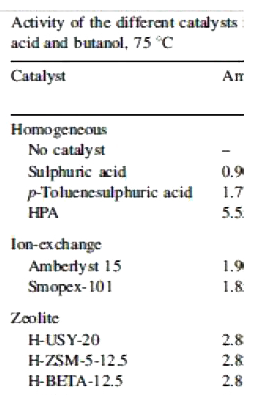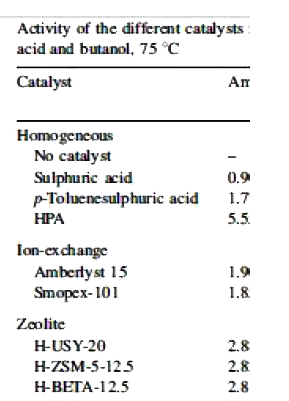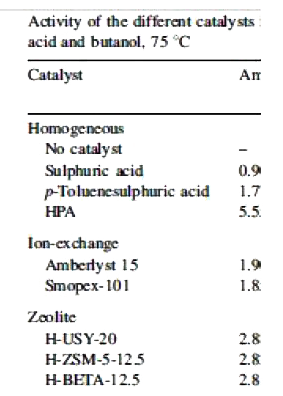Which of the statement regarding treatment of cancer is false?
I. Chemotherapy has side effects like hair loss and anaemia.
II. Radon (Rn-220) is the most commonly used isotope for radiation therapy.
III. α- interferon are used as immunological substances which activate the immune system.
IV. Isotope of carbon is also for radiation therapy.
I and II
Only III
Only IV
II and IV
The correct Answer is:C
Step by step video, text & image solution for Which of the statement regarding treatment of cancer is false? I. Chemotherapy has side effects like hair loss and anaemia. II. Radon (Rn-220) is the most commonly used isotope for radiation therapy. III. alpha- interferon are used as immunological substances which activate the immune system. IV. Isotope of carbon is also for radiation therapy. by Biology experts to help you in doubts & scoring excellent marks in Class 12 exams.
Topper's Solved these Questions
- BOOK - ARIHANT NEETCHAPTER - HUMAN HEALTH AND DISEASESEXERCISE - CHAPTER EXCERCISES ((B) MEDICAL ENTRANCES SPECIAL FORMAT QUESTIONS (MATCH THE COLUMNS))5videos
HUMAN HEALTH AND DISEASES
- BOOK - ARIHANT NEETCHAPTER - HUMAN HEALTH AND DISEASESEXERCISE - CHAPTER EXCERCISES ((B) MEDICAL ENTRANCES SPECIAL FORMAT QUESTIONS (ASSERTION AND REASON))6videos
HUMAN HEALTH AND DISEASES
- BOOK - ARIHANT NEETCHAPTER - HUMAN HEALTH AND DISEASESEXERCISE - CHAPTER EXCERCISES ((A) TAKING IT TOGETHER (ASSORTED QUESTIONS OF THE CHAPTER FOR ADVANCED LAVEL PRACTICE))103videos
HUMAN HEALTH AND DISEASES
- BOOK - ARIHANT NEETCHAPTER - HUMAN GENETICSEXERCISE - Chapter Exercise (c) Medical entrances gallery (Collection of questions asked in NEET & Various Medical Entrance Exams)83videos
HUMAN GENETICS
- BOOK - ARIHANT NEETCHAPTER - HUMAN REPRODUCTION EXERCISE - MEDICAL ENTRANCES GALLERY (COLLECTION OF QUESTIONS ASKED IN NEET & VARIOUS MEDICAL ENTRANCE EXAMS)69videos
HUMAN REPRODUCTION
Similar Questions
"The Centre for Science and Environment announced that samples of 12 soft drink brands collected for testing from in and around capital of India contained residues of four extremely toxic pesticides and insecticide". Assuming the above finding to be true consider the statements I and II and decide which of the following options is most appropriate.
Statements:
I. the sample had enough poison to cause long-term cancer, damage to the nervous and reproductive systems, birth defects and severe disruption of the immune system.
II. These products are world class and are the same as are sold in Europe and the US and are tested by top-grade labs like Vimta in Hyderabad and TNO in the Netherlands.
1) I is strengthening the finding while II is not weakening it.
2) I is not strengthening the finding while II is weakening it.
3) Iis strengthening the finding while II weakening it.
4) Iis weakening the finding while II is strengthening it.
5) None of theseView SolutionNaveen is a student of class IX in a city school. His uncle Ram Dev who lives in a village is not keeping good health. He has a tumour in his body. Ram Dev has come to city alongwith his son Ramesh for treatment. Naveen accompanied them to the most famous hospital for medical check-up and treatment. Whan Ram Dev told the person at the reception desk that he had a tumour, he was asked to go to the oncology department of the hospital. The special doctor (called oncologist) examined the tumour of Ram Dev carefully. He then removed some tissue from the tumour and sent it for biopsy, so as to find whether the tumour was malignant or not. The result of biopsy showed that the tumour was malignant. The doctor told Ram Dev that he had come to the hospital at the right time due to which his disease had been detected at an early stage and can be cured successfully. The doctor then recommended radiotherapy for Ram Dev. Naveen had come to know of the term ratiotherapy, Naveen could make out what disease isotopes in his class. So, as soon as doctor talked of radiotherapy, Naveen could make out what disease his uncle was suffering from. He also shared his knowledge of this disease with his uncle and his son.
(a) What do you think is the disease Ram Dev is suffering from ? Define this disease
(b) What are (i) tumour (ii) oncoloy (iii) oncologist, and (iv) biopsy ?
(c) What is meant by saying that the tumour is malignant ?
(d) What is ratiotherapy ? Explain it working briefly
(e) Which ratioactive isotope is usually used in the treatment of this disease by radiotherapy ? How does it work ?
(f) What values ae displayed by Naveen in this episode ?View Solution
Knowledge Check
- Question 1 - Select One
Read the given Statements regarding immunization and select the option that identifies the correct ones .
I. The principal of vaccination is based on the memory of the immune system .
II.The antibodies produced in the body against antigens neutralise the pathogenic agents before the actual infection.
III. Hepatitis B vaccine is prepared by using a virus in recombination DNA technology.
IV. Antibiotics are given directly in elicit a quick immune response.AI and IIIBII,III and IVCI , II and IIIDI and IV - Question 2 - Select One
Read the following statements. Identify which of them are true and which of them are false and select the correct option.
I. Ascaris, commonly known as pinworm, is responsible for causing ascariasis.
II. The acid present in the stomach acts as a physiological barrier and prevents microbial growth.
III. The pathogen responsible for causing elephantiasis is a fungus belonging to genus Microsporum.
IV Infection diseases like tetanus and pneumonia have been largely controller using vaccines.AA - True, B - False , C - True , D - FalseBA -False , B - True, C - False , D - TrueCA -False , B - True, C - True , D - FalseDA -False , B - False, C - True , D - True - Question 3 - Select One
Which of the following statement is / are incorrect ?
(i) Green light falling in the range of wavelength 500 0 -580 nm is least effective for photosynthesis.
(ii) In non - cyclic photophosphorylation, the electron expelled from the reaction centre is not cycled back , though its loos is compensated by electrons from the photolysis of water .
(iii) Chl a , Chl b , carotenoids , and xanthophylls are insoluble in organic solvents.
(iv) 400-700 nm light is used in photosynthesis also known as PAR.
(v) Red light is the most effective for photosynthesis.A(iv) and (v)B(iii) and (v)C(ii) and (v)D(iv) only
Read the passage given below and answer the question:
Industrially widely applied esterification reactions are commonly catalysed using mineral liquid acids, such as sulphuric acid and p-toluenesulphonic acid. The catalytic activity of homogeneous catalysts is high. They suffer, however, from several drawbacks, such as their corrosive nature, the existence of side reactions, and the fact that the catalyst cannot be easily separated from the reaction mixture. The use of solid acid catalysts offers an alternative and has received a lot of attention in the past years. Solid acid catalysts are not corrosive and, coated onto a support, they can be easily reused. Examples of solid acid catalysts used in esterification reactions include ion-exchange resins, zeolites and superacids like sulphated zirconia and niobium acid. Ion-exchange resins are the most common heterogeneous catalysts used and have proven to be effective in liquid phase esterification and etherification reactions. Because of their selective adsorption of reactants and swelling nature, these resins not only catalyse the esterification reaction but also affect the equilibrium conversion. Shortcomings include insufficient thermal resistance, which limits the reaction temperature to 120∘C, preventing widespread use in industry. Zeolites, like Y, X, BEA, ZSM-5 and MCM 41 offer an interesting alternative and have proven to be efficient catalysts for esterification reactions. Zeolites have found wide application in oil refining, petrochemistry and in the production of fine chemicals. Their success is based on the possibility to prepare zeolites with strong Brønsted acidity that can be controlled within a certain range, combined with a good resistance to high reaction temperatures.
In this study, the activity of various commercial available solid acid catalysts is assessed with respect to the esterification of acetic acid with butanol. The ion-exchange resins Amberlyst 15 and Smopex-101, the acid zeolites H-ZSM-5, H-MOR, H-BETA and H-USY, and the solid superacids sulphated zirconia and niobium acid are selected. Comparative esterification experiments have been carried out using the homogeneous catalysts sulphuric acid, p toluenesulphuric acid and a heteropolyacid (HPA). The weight-based activity of the heterogeneous catalysts tested is maximum for Smopex 101. The following table gives the activity of different catalysts in the esterification reaction between acetic acid and butanol at 75∘C.

Here: kobs : observed reaction rate constant (m3mol−1s−1) kc catalysed reaction rate constant (m3mol−1g−1cats−1) Please note: k c = k obs/ amount (in g)
(source: PETERS, T., BENES, N., HOLMEN, A., & KEURENTJES, J. (2006). Comparison of commercial solid acid catalysts for the esterification of acetic acid with butanol. Applied Catalysis A: General, 297(2), 182-188. doi:10.1016/j.apcata.2005.09.00)
The weight-based activity of the heterogeneous catalysts tested decreases in the following order:View SolutionRead the passage given below and answer the question:
Industrially widely applied esterification reactions are commonly catalysed using mineral liquid acids, such as sulphuric acid and p-toluenesulphonic acid. The catalytic activity of homogeneous catalysts is high. They suffer, however, from several drawbacks, such as their corrosive nature, the existence of side reactions, and the fact that the catalyst cannot be easily separated from the reaction mixture. The use of solid acid catalysts offers an alternative and has received a lot of attention in the past years. Solid acid catalysts are not corrosive and, coated onto a support, they can be easily reused. Examples of solid acid catalysts used in esterification reactions include ion-exchange resins, zeolites and superacids like sulphated zirconia and niobium acid. Ion-exchange resins are the most common heterogeneous catalysts used and have proven to be effective in liquid phase esterification and etherification reactions. Because of their selective adsorption of reactants and swelling nature, these resins not only catalyse the esterification reaction but also affect the equilibrium conversion. Shortcomings include insufficient thermal resistance, which limits the reaction temperature to 120∘C, preventing widespread use in industry. Zeolites, like Y, X, BEA, ZSM-5 and MCM 41 offer an interesting alternative and have proven to be efficient catalysts for esterification reactions. Zeolites have found wide application in oil refining, petrochemistry and in the production of fine chemicals. Their success is based on the possibility to prepare zeolites with strong Brønsted acidity that can be controlled within a certain range, combined with a good resistance to high reaction temperatures.
In this study, the activity of various commercial available solid acid catalysts is assessed with respect to the esterification of acetic acid with butanol. The ion-exchange resins Amberlyst 15 and Smopex-101, the acid zeolites H-ZSM-5, H-MOR, H-BETA and H-USY, and the solid superacids sulphated zirconia and niobium acid are selected. Comparative esterification experiments have been carried out using the homogeneous catalysts sulphuric acid, p toluenesulphuric acid and a heteropolyacid (HPA). The weight-based activity of the heterogeneous catalysts tested is maximum for Smopex 101. The following table gives the activity of different catalysts in the esterification reaction between acetic acid and butanol at 75∘C.

Here: kobs : observed reaction rate constant (m3mol−1s−1) kc catalysed reaction rate constant (m3mol−1g−1cats−1) Please note: k c = k obs/ amount (in g)
(source: PETERS, T., BENES, N., HOLMEN, A., & KEURENTJES, J. (2006). Comparison of commercial solid acid catalysts for the esterification of acetic acid with butanol. Applied Catalysis A: General, 297(2), 182-188. doi:10.1016/j.apcata.2005.09.00)
The catalytic activity of homogeneous catalysts is high. The weight based activity of HPA is less than which of the following heterogenous catalysts?View SolutionRead the passage given below and answer the question:
Industrially widely applied esterification reactions are commonly catalysed using mineral liquid acids, such as sulphuric acid and p-toluenesulphonic acid. The catalytic activity of homogeneous catalysts is high. They suffer, however, from several drawbacks, such as their corrosive nature, the existence of side reactions, and the fact that the catalyst cannot be easily separated from the reaction mixture. The use of solid acid catalysts offers an alternative and has received a lot of attention in the past years. Solid acid catalysts are not corrosive and, coated onto a support, they can be easily reused. Examples of solid acid catalysts used in esterification reactions include ion-exchange resins, zeolites and superacids like sulphated zirconia and niobium acid. Ion-exchange resins are the most common heterogeneous catalysts used and have proven to be effective in liquid phase esterification and etherification reactions. Because of their selective adsorption of reactants and swelling nature, these resins not only catalyse the esterification reaction but also affect the equilibrium conversion. Shortcomings include insufficient thermal resistance, which limits the reaction temperature to 120∘C, preventing widespread use in industry. Zeolites, like Y, X, BEA, ZSM-5 and MCM 41 offer an interesting alternative and have proven to be efficient catalysts for esterification reactions. Zeolites have found wide application in oil refining, petrochemistry and in the production of fine chemicals. Their success is based on the possibility to prepare zeolites with strong Brønsted acidity that can be controlled within a certain range, combined with a good resistance to high reaction temperatures.
In this study, the activity of various commercial available solid acid catalysts is assessed with respect to the esterification of acetic acid with butanol. The ion-exchange resins Amberlyst 15 and Smopex-101, the acid zeolites H-ZSM-5, H-MOR, H-BETA and H-USY, and the solid superacids sulphated zirconia and niobium acid are selected. Comparative esterification experiments have been carried out using the homogeneous catalysts sulphuric acid, p toluenesulphuric acid and a heteropolyacid (HPA). The weight-based activity of the heterogeneous catalysts tested is maximum for Smopex 101. The following table gives the activity of different catalysts in the esterification reaction between acetic acid and butanol at 75∘C.

Here: kobs : observed reaction rate constant (m3mol−1s−1) kc catalysed reaction rate constant (m3mol−1g−1cats−1) Please note: k c = k obs/ amount (in g)
(source: PETERS, T., BENES, N., HOLMEN, A., & KEURENTJES, J. (2006). Comparison of commercial solid acid catalysts for the esterification of acetic acid with butanol. Applied Catalysis A: General, 297(2), 182-188. doi:10.1016/j.apcata.2005.09.00)
Catalysts used in oil refining industry are:View SolutionThe half life can serve as the molecular clock to determine the age of different products i.e., mineral, rocks and matter of vegetable origin such as wood, charcoal etc. because the half-life of a particlar nucleide is constant. C-14 being radio-isotope , it is also used to determine the age of different products. which is known as radio-carbon dating.
C-14 is a neutron rich nucleide that decays by β-emission with a half-life of 5730 years as under :
146C→147N+0−1e
Just after World War II . WIllcard F. Libby proposed a way to use this rection to determine the age of the carbon containing substances. The C-14 dating technique for which Libby received nobel is based upon the following assumption .
(i) C-14 is produced in atmosphere at a more or less constant rate which is also equal to its rate of decay. As a result, there is a constant concentration of C-14 in the atmosphere and all living things.
(ii) After death, organisms no longer pick C-14
(iii) By comparing activity of a sample with acitivity of living tissue we can estimate the age of organisms . One of the Libby's assumptions is questionable, the amount of C-14 has not been constant with time. It has varied as much as ±5% .
The activity of the C-14 in given tissue is 15.3 dpm per gram of carbon. The limit for the reliable determination of C-14 is 0.1 dpm per gram of carbon. The maximum age of the sample, that can be dated accurately , isView SolutionStatement - as the festive season is round the corner, the country is on high alert due to rise in the level of pollution. So, government has given the orders to use green crackers in place of conventional crackers just few days before Diwali. These green crackers are environment friendly and cost effective fire-craker and produce 20-30% less pollution over conventional one.
Which of the following is incorrect with respect to the given statement ?
(I) Fire crackers release pollutant which in turn mixed with air and cause pollution.
(II) In festive season the level of pollution gets increased.
(III) The government is taking various steps to decline the level of pollution.
(IV) the green fire crackers are quite expensive, so the shopkeepers will have to bear loss.View Solution

